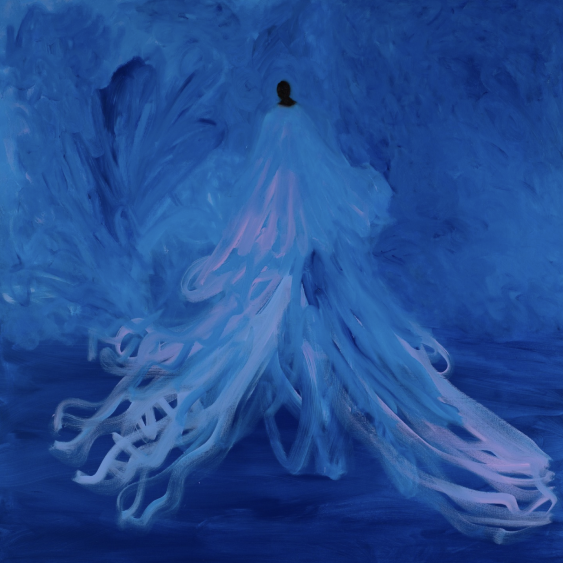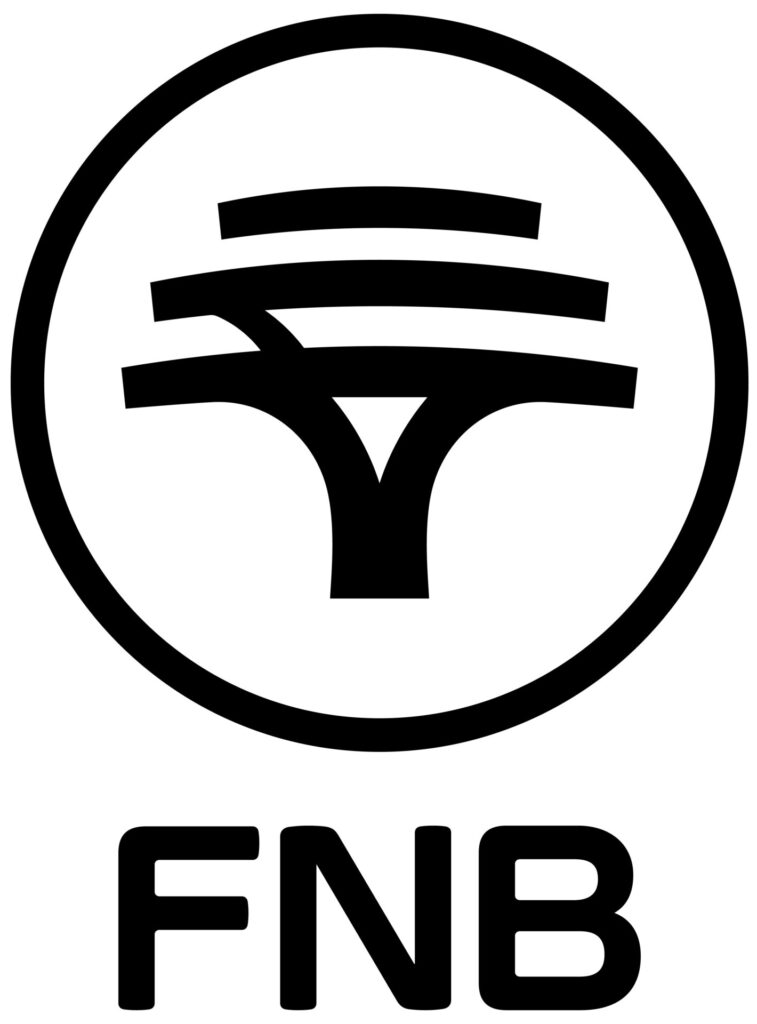Gallery of Interest
Commercially conscious and connected to the culture
with Kalashnikovv Gallery
Share

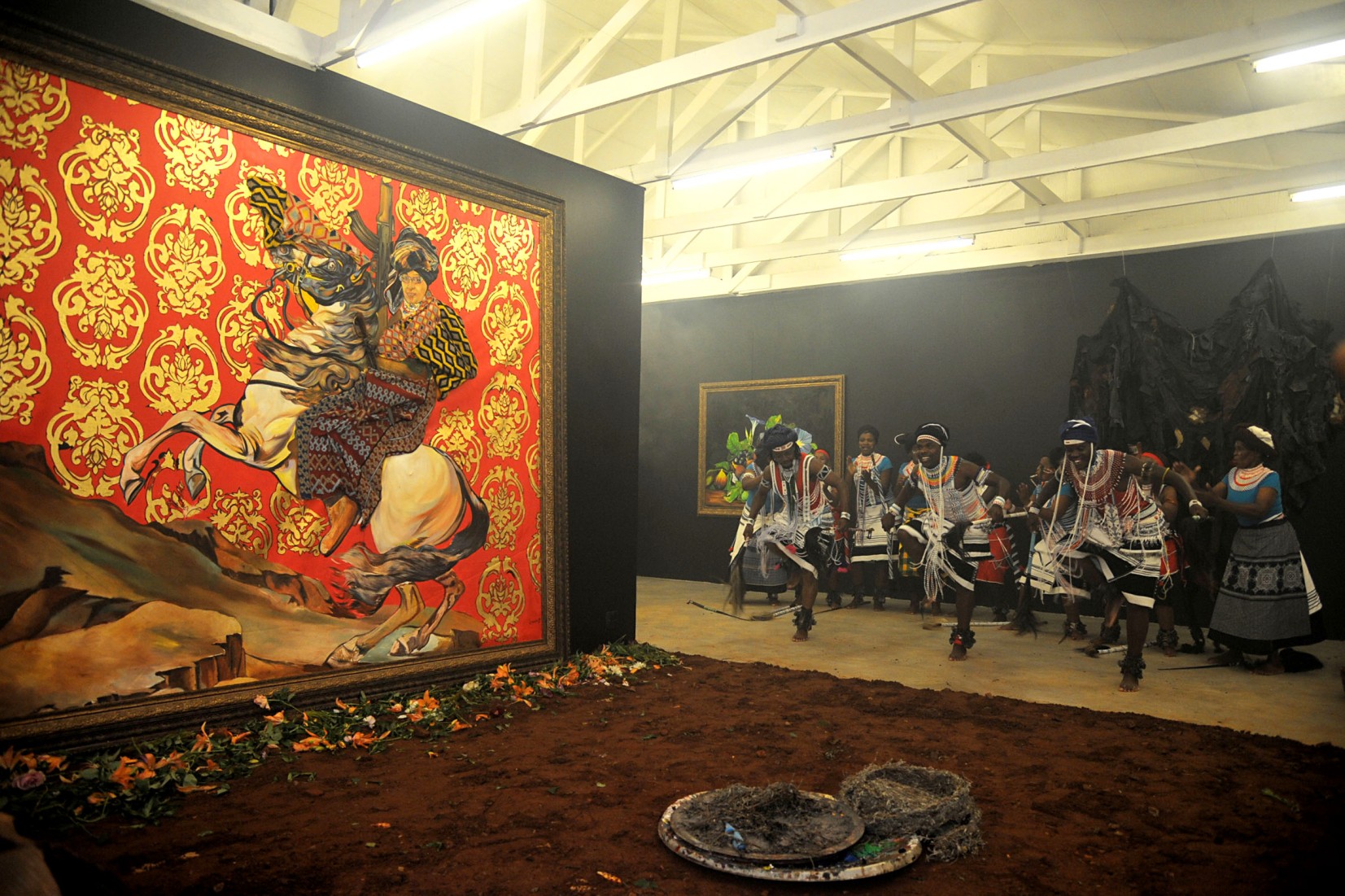
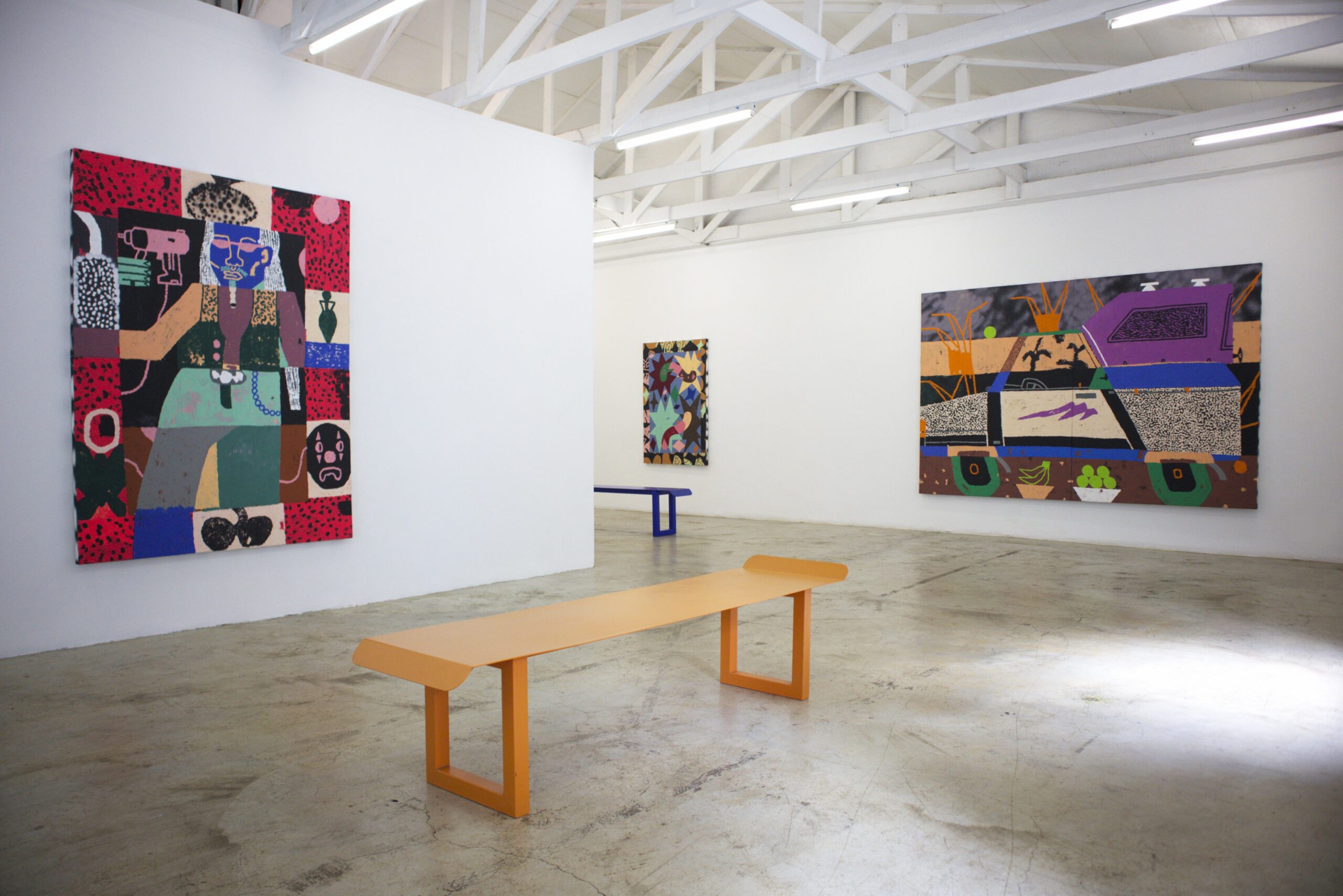

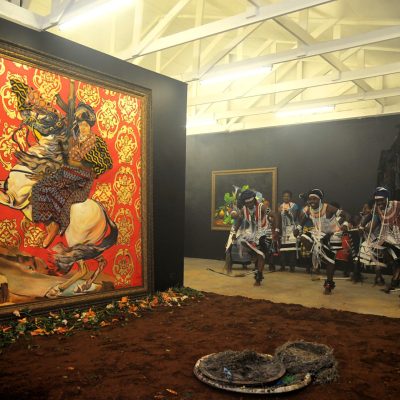
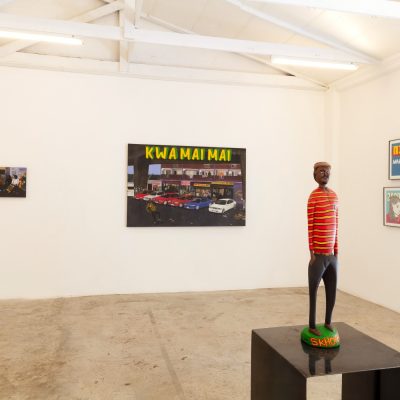
Ten years ago, friends MJ Turpin and Matthew Dean Dowdle established a gallery no larger than 30 square metres in Braamfontein’s Juta Street. They called it Kalashnikovv Gallery. Now an epicentre for alternative culture cultivation, Kalashnikovv is still committed to cementing alternative artist practices, street culture and the inner city public’s engagement with contemporary art. Although the Kalashnikovv Gallery model centres conventional exhibition making, groove and gathering are critical components of how the gallery approaches their interventions. An entry point for audiences that may not respond to white walls, Kalashnikovv sees the social aspect of the programming as an integral lubricant for access. Reflecting on their first decade, this week’s Of Interest features the gallerists’ thoughts on staying alternative, adapting to survive and the lessons they will be using in the years to come.
About twelve to thirteen years ago, there were a lot of unoccupied buildings and disused spaces in Johannesburg’s inner city. Addressing this with a series of large scale group exhibitions under the name Satellite Spaces /// The Untitled Gallery, MJ Turpin and Matthew Dean Dowdle activated venues like the Main Street Life building in Maboneng and August House before it became August House. But after some time, Turpin and Dowdle reached a point where the public’s appetite for their programming required a permanent space. Cemented in Braamfontein for the last decade, Kalashnikovv Gallery has now grown to represent a diverse group of artists with a keen interest on unknown Black, young and femme artists. The product of cultural practitioners born, bred and immersed in Johannesburg, the gallery’s model addresses exclusion and displacement by embracing alternative modes of expression, accessible curatorial frameworks, sustainable brand partnerships, transparency with the public and educating art buying audiences.
So let’s go back ten years. What were the series of events and conversations that led up to, and informed you, establishing Kalashnikovv Gallery?
Matthew: We had been creating large scale group exhibitions for about two years before we had the gallery. The large group exhibitions had their own ethos. We called it Satellite Spaces /// The Untitled Gallery. It was in one part about disused spaces in the city. There were a lot of spaces that were empty in the city, about twelve to thirteen years ago. One of the first big white cubes that we had was in what is the Main Street Life building in Maboneng. Then from there we had a few in Newtown, Braamfontein and even August House before it was August House as we know it. I think Kentridge’s old studio had a whole floor there.
MJ: Yeah, Nicholas Hlobo, Mary Sibande, they all had studios there. There were like ten artists there and they all had massive spaces. We used one of them for the Satellite Spaces /// The Untitled Gallery.
Matthew: After some time we wanted to make it more permanent. We hadn’t, at that stage, thought about fully representing artists and having a deliberate programme. All we knew was we wanted to have a permanent space. We wanted to stop being transient.
MJ: It was for artists that have practices that weren’t familiar to the white cube world, to the gallery world, to the high art world. I think our first show was just graffiti artists. That’s how we started, we were very much aligned with street culture.
Matthew: But apart from the fact that we were already hosting exhibitions, we wanted to maintain this platform for artists who didn’t have platforms. It was really, for me, taking up the opportunity to be an alternative. I mean The prevailing discourse around contemporary art 12 years ago wasn’t what it is now. It was really vanilla and conservative. Seeing how it’s changed over the years has been really refreshing. I like to think that we were a part of that change. Just to see galleries that are much older than us and the way that they’ve approached working with younger artists was unexpected considering the direction things were going in the ten years before. A lot of the bigger galleries didn’t have artists that resonate with us, as a younger generation.
MJ: It’s Dada Khanyisa for Stevenson, Lady Skollie for Everad Read, that shit would never happen back then. Or Asha Zero at Smac. Even Kudzanai, to some degree, at Goodman. Khaya Witbooi at Gallery Momo. It was always too high brow. Even when it was cool, it was highly conceptual and arguably, if you are not from the art world, would leave you thinking “what the hell is this oke doing”.
Matthew: At the core of it, running an art gallery is not about dealing in art for us. It’s to portray and promote culture, whatever the culture is. I mean, before Kalashnikovv we showed this by producing what has since become a huge cultural festival at Constitution Hill: Basha Uhuru. We conceptualised and ran it for four years. In the first year it was a one to two thousand person festival. By the end of the fourth year, it was a ten to twelve thousand person festival.
Matthew, your roots are in street art and music. MJ, you studied fine art and still practice as an artist. How would you describe your personal relationships with contemporary art?
Matthew: I mean I came to contemporary art because I had friends that were in it. I was jumping over the wall or cutting through fences to paint in Newtown. That was my point of departure.
MJ: I was at Wits.
Matthew: I went straight into the music industry after studying. I studied sound and became an engineer for bands and for events. Then I started managing artists. Now I basically do the same thing, but it’s visual artists not music artists.
MJ: I used to be in bands and that’s how we would work together. So we worked together in music before we partnered in art.
Let’s expand on this idea of Kalashnikovv Gallery serving audiences that were a part of Johannesburg’s culture scene but would historically avoid the contemporary art scene. What are the tangible day to day ways that this is carried out?
Matthew: One of the things Kalashnikovv achieved was being the first gallery that a lot of people visited. For many people, it’s the first gallery they ever visit. It’s close to one of our major art schools, it’s an area with high foot traffic but of people who are not necessarily looking to go and see art in that way. One of the questions we get a lot when people walk into Kalashnikovv is “can we come inside? Do we have to pay? What is this?”
MJ: That’s one of the reasons why our openings have DJs, we always have music. It’s instinctive to pop your head in to see what is happening when you hear music.
Matthew: Admittedly, there have been some levels of conformity in order to create a bigger platform for our artists.
MJ: Also to survive, you have to become more commercially conscious while observing global and local trends, dare I say it.
Matthew: In the beginning we had that very punk aesthetic and that’s what our programming was about. But it was very challenging trying to provoke a response from the public while challenging preconceived ideas of what was acceptable in a gallery. Now we are much less political. But in South Africa, everything is political. But to maintain our place, we oscillate between polar opposites. For example our last exhibition was with Dr. Johan Thom, a very conceptual, senior arts professor who has had a 20 year long career. Then there’s our young artists. The show just before Johan was Charity Vilakazi.
MJ: She’s almost the complete opposite of Johan: A black, female, young, non-academic artist focusing on matriarchal stories. We made a concerted effort to go out there and find Black women that the public isn’t engaging with as much as they should.

Is your attachment to street culture one of the reasons why you’re steadfast on being in Braamfontein, a cultural hub that other galleries have occupied but since left?
Matthew: In all honesty, being in Braam has been positive in spite of the stigma that the city centre has. We’ve had people ask us to bring work to their houses to view it because they don’t want to come to Braam.
MJ: We never backed down. Then it got cool to activate in the city. We realised that we have to coach people from outside the city on how to engage with the city. Kalashnikovv was born and bred in Johannesburg like us. I used to skateboard, he used to rollerblade. Being from the suburbs; coming to town was the holy grail. It’s so easy to be isolated from the city when you’re in the north. But the nature of Braamfontein is cyclical and youth focused. Our reign here might be up and it’s time for the new kids, the new Kalashnikovv to step up and step out.
I want to go back a few steps and have you expand on this idea of coaching audiences on how to engage with your model and location. What has that looked like when people engage with your artists considering the attention contemporary African art has had in the last seven or so years?
Matthew: There’s been a slight mutation in the attention we’re getting in that the focus is now on the global south which includes Africa, South America, and Asia. I think one of the functions of a gallerist is to educate the audience, the art buying audience. Especially those from outside of our country. You know South Africa has a very patriotic art buying public. We really have a great art buying audience. But when they’re international buyers looking to enter this market, we have to negotiate with their preconceptions. Before the so-called focus on Africa, we noticed something while in Berlin. A lot of people would walk into our gallery in Berlin, or even at the international fairs that we were doing, and say “but this doesn’t even look African. There is still an extremely narrow view on the African aesthetic. Now the problems are different.
MJ: Yeah. Essentially we walk on a tightrope because we have to traverse the ability to be commercially viable without stifling freedom of expression or sociopolitical engagement. Whether we would like to admit it or not, we are two white guys running a gallery. So a lot of the time it’s about stepping back and giving our artists the platform to be who they want to be without censorship. The audiences catch up eventually.
Just before we wrap up our conversation, could you share some of the lessons you’ve learned and tell me what has kept you committed to the art scene?
Matthew: If I had to give it a one liner it would be to trust yourself because if you know what you want to do and you trust your vision, things work out. Our decision to work with young alternative artists and to stay connected to Johannesburg’s street culture is what gave us our edge. People really care, they still engage with our gut mission.
MJ: Sadism. Sadomasochism has kept me in the art world. But it is as rewarding as it is punishing to uplift the marginalised, neglected or shunned artist who normally wouldn’t get support from a gallery system. It’s not a saviour complex but fuck, someone’s got to do it. We stay because we’ve always been outsiders. We’ve never been mainstream. We never believed in nor had the urge to follow a status quo and it shows. Now that we’re older, we have to champion the kids who are like we were. I’m that forty year old now. It’s what we fought for.
Knowing everything that you know now, how would you like to move Kalashnikovv into the next decade?
Matthew: I would like to see Kalashnikovv reconnect with some of the earlier ideas that might have been glossed over or sterilized on the journey to becoming a bigger platform. To become a commercially viable gallery, some of that edge had to be sacrificed. I don’t think we push boundaries as much as we did back then. So it would be nice to see what that would look like now that we’re established. I think to really move forward and maintain the success we have, the plan is to stay true to our original ideals and ethos which is to champion the outsider and platform the underdog.
Subscribe
Subscribe
For exclusive news, tickets and invites delivered every week
